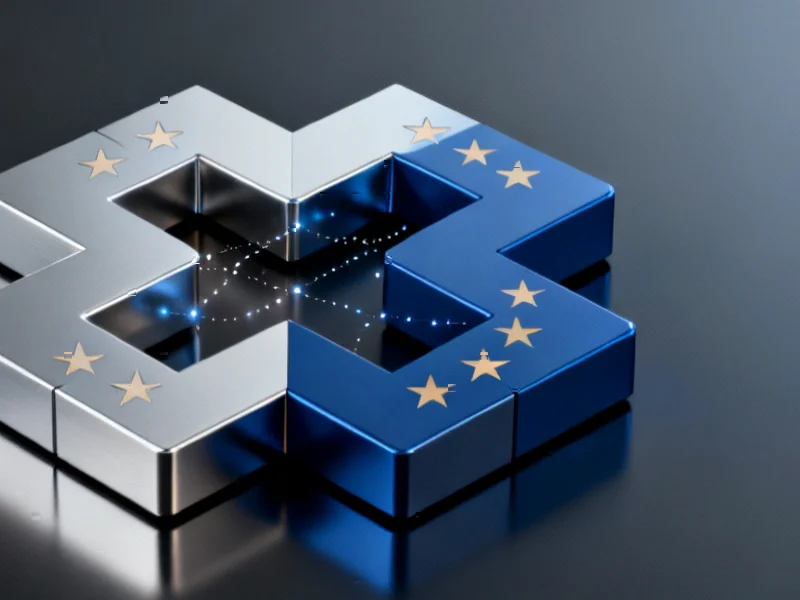According to TechCrunch, buy-now-pay-later services have exploded to 91.5 million users in the United States, with 25% now using them for groceries. Default rates are accelerating dramatically – 42% of BNPL users made at least one late payment in 2025, up from 39% in 2024 and 34% in 2023. Consumer Financial Protection Bureau data shows roughly 63% of borrowers originated multiple simultaneous loans, while 33% took loans from multiple BNPL lenders. Nigel Morris, who co-founded Capital One and invested in Klarna and Aplazo, calls this trend deeply concerning, telling audiences at Web Summit that using BNPL for basic necessities signals serious consumer stress. The situation is complicated by regulatory upheaval – the CFPB recently reversed course on treating BNPL like credit cards after industry lobbying.
The phantom debt problem
Here’s what makes this situation particularly dangerous: most BNPL loans aren’t reported to credit bureaus. Regulators call this “phantom debt” – lenders can’t see when someone has taken out five different BNPL loans across multiple platforms. The credit system is essentially flying blind. Morris explained it perfectly: “If I’m a buy-now-pay-later provider, and I’m not checking bureau data, I’m not feeding bureau data, I am oblivious to the fact that Nigel may have taken out 10 of these things in the last week.” And the borrower profile is concerning – nearly two-thirds had lower credit scores, with subprime applicants being approved 78% of the time according to 2022 data from Lending Tree.
Regulatory whiplash makes it worse
The data situation is a mess, and politics is largely to blame. The Biden administration tried to treat BNPL like credit cards under Truth in Lending Act protections. Then the Trump administration reversed course in May 2025 – the CFPB said it wouldn’t enforce that rule and rescinded 67 interpretive rules dating back to 2011. The agency claimed the regulations provided “little benefit to consumers” and placed a “substantial burden” on companies. Translation? BNPL companies lobbied successfully. Suddenly, the CFPB released a new report saying subprime borrowers repaid their BNPL loans 98% of the time. But that report only looked at first-time users – the 42% late payment rate comes from the entire user base. See the problem?
Storm clouds on the horizon
Morris is careful not to overstate comparisons to 2008, but he sees worrying signs everywhere. Unemployment hit 4.3%, its highest in almost four years. There’s “tumult around immigration and around tariffs and around the recent government shutdown.” Small businesses are “very loath to invest.” Then there’s the end of the student loan payment moratorium – roughly 5.3 million borrowers are in default according to a Congressional Research Service analysis. Recent wage growth has been positive, but USA Facts shows the cumulative effect of 2021-2023 inflation hasn’t been fully recovered. Auto delinquencies and long-term unemployment continue deteriorating. It’s not a crisis yet, but the ingredients are there.
business-model-problem”>The business model problem
Here’s the really concerning part about how these companies operate. Morris described “the mom test” from his Capital One days: “If this idea was presented to your mother and she called you up and said, ‘Son, should I take this product?’ And if you can’t unequivocally say yes, it’s a good product, you should not be offering it to the American people.” But BNPL companies aren’t transparent about their returns, and most don’t report to credit bureaus. This means borrowers can’t use successful repayment to access lower-cost credit. Morris dropped this bombshell: “Some of these buy-now-pay-later companies don’t want that to happen because they don’t want the consumer to graduate.” They want to keep customers in their ecosystem, even if it means those customers never build credit to access better options.
Why this could cascade
The Federal Reserve Bank of Richmond has warned that BNPL’s potential systemic risk comes from its “spillover effects onto other consumer credit products.” Here’s how that works: because BNPL loans are typically smaller than credit card balances or auto loans, borrowers tend to prioritize keeping them current. That means other, larger debts start to default first. Someone might have a perfect record on their four BNPL accounts while their credit card, car loan, and student loan all go delinquent. And the borders between this unregulated lending and traditional banking are disappearing entirely. Klarna has been operating as a licensed bank in Europe since 2017. Affirm now has nearly 2 million debit cardholders who can finance purchases in physical stores. Both are integrated into Apple Pay and Google Pay. The invisible problem is getting exponentially bigger, and we’re mostly flying blind.




